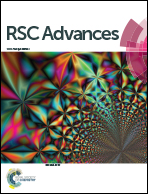The migration of acetochlor from feed to milk
Abstract
Acetochlor has been widely used globally for its effective weed control, but the dietary intake of associated residues by people has become a major concern nowadays. Milk is regarded as the best solvent to dissolve pesticides due to its fat-rich characteristic. In this study, we aimed to evaluate the transfer of acetochlor from feed to raw milk. Twenty lactating Australian Holstein cows were randomly chosen and divided into 1 control group and 3 treatment groups, feeding acetochlor at the dosages of 0, 0.45, 1.35 and 4.05 g per day during the treatment period. The concentration of acetochlor residues in raw milk was detected by QuEChERS together with a gas chromatography-mass spectrometry (GC-MS) method. The results showed that the highest concentrations of acetochlor residues in raw milk for the three treatment groups had a positive correlation with the dosage levels and the transfer efficiency of the low dose group was only 0.080%, higher than those of the other two groups. Besides, the national estimated daily intake (NEDI) of acetochlor from milk is 1.67 × 10−5 mg kg−1, which is 0.08% of the ADI. Overall, we concluded that the risk of acetochlor residues in milk was low, but high-dose acetochlor had a larger impact on milk quality and low-dose acetochlor had potential risks.



 Please wait while we load your content...
Please wait while we load your content...